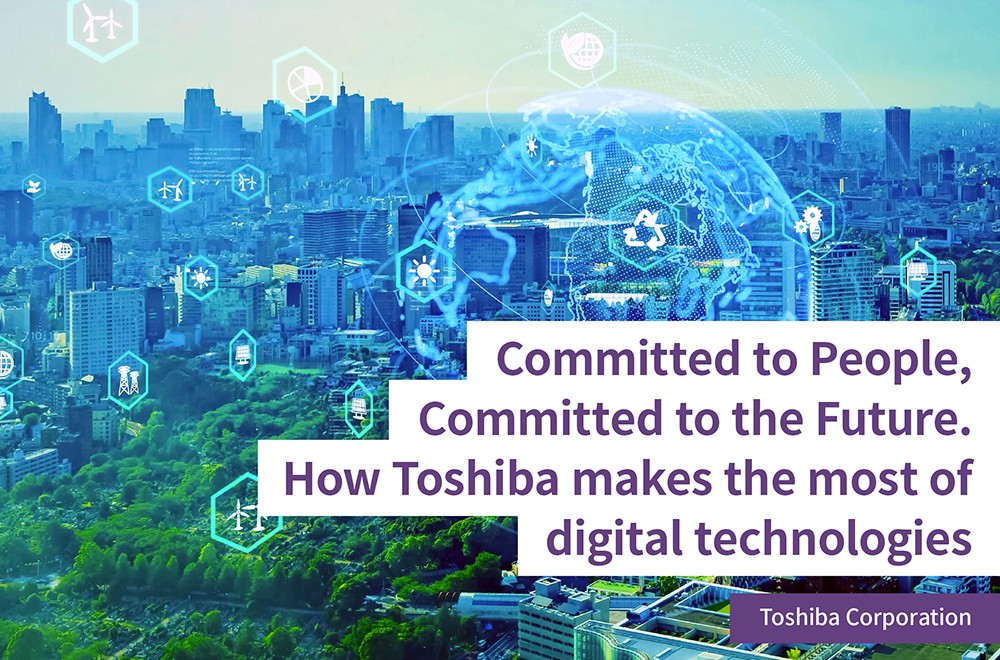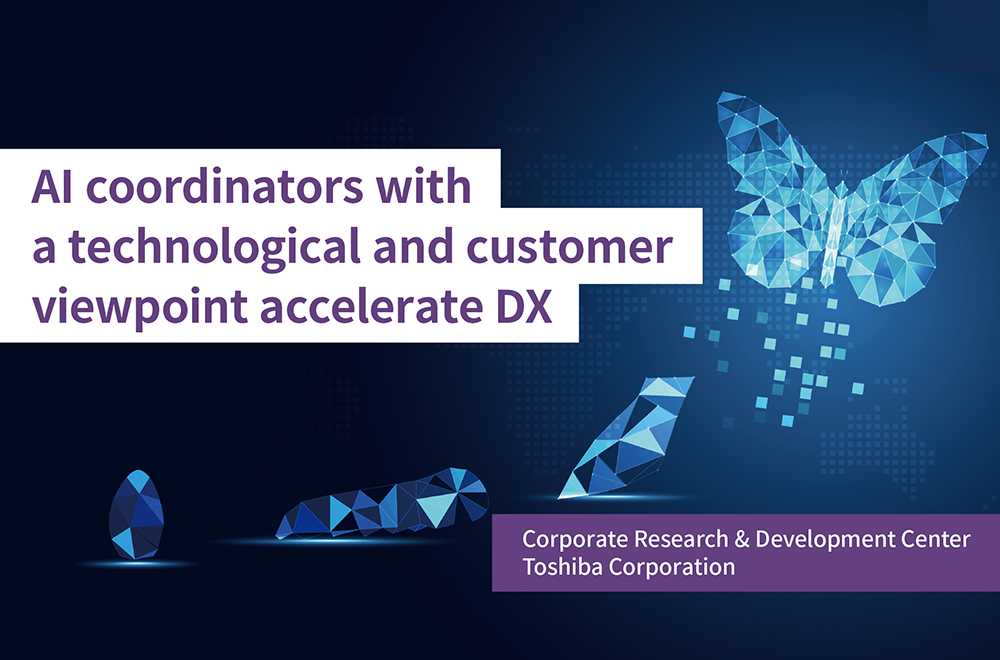Getting the Best from Reliable Hardware with Software Defined, Part 1 -Redefine how Value is Created, Transform Product Creation
2023/05/17 Toshiba Clip Team
- Toshiba has adopted software defined. What is that?
- The CEO defines two issues management strategy must overcome
- Software defined realized with reliable hardware
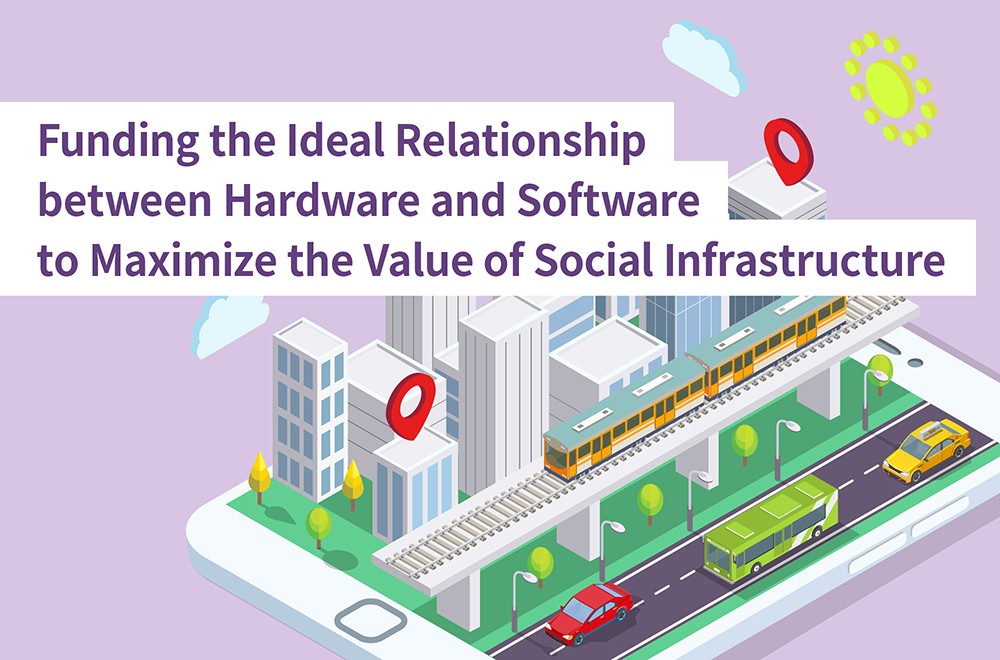
With a market capitalization of over $1 trillion*, Tesla is the frontrunner in the automotive industry. It has achieved this through innovation. In addition to their reliability as hardware, its cars are installed with software that, like smartphones, can be remotely updated to add new features and improve performance, such as cruising range. At a time when constant improvements in the value of hardware and software have become possible, it is no surprise that the concept of software defined is once again gaining attention.
*In October 2021.
Toshiba is also exploring the concept, using it accelerate the progress of previous moves it has made. In doing so, the company is making full use of hardware technologies cultivated over almost 150 years in manufacturing, and know-how in software that includes more than 50 years of AI development. Taro Shimada, Toshiba’s CEO, has pointed out that there are two obstacles the company has to overcome in working toward this transformation. In this article, we talk to Toshiba’s head of software development on how these challenges are being met and overcome.
Software defined is the idea of using software to realize (define) hardware functions, and it is not that new an idea. It was originally popularized with the rise of the Internet, when there was an emphasis on how best to connect the different parts of the network.
It is easy to understand the renewed interest. As networks grow in complexity, the initial focus of interest is how to manage them efficiently. Then, when you reach the point where the software starts to manage the hardware, as in the case of Tesla, the conversation turns to the next phase of the vision. This is where software defined comes in. The central idea is to be future-ready by reviewing the division of functions, and achieving targeted value and objectives by maximizing the flexibility of the software and the reliability of the hardware. Brought to the development of software-defined systems, it allows various applications to be connected to create new added value.
The initiatives that have emerged by adopting this approach, and the value they have realized, have made software defined a hot topic in recent years. The automotive industry was an early adopter, and now leading companies in other sectors are also developing the concept. For instance, in the idea of software-defined vehicles, the value of hardware, the automobile itself, is no longer limited to running, stopping, and turning. The software can collect driving data and update functions, and value-added services can be provided with apps. With this kind of development in mind, people are starting to anticipate the emergence of a very large and very impressive market.
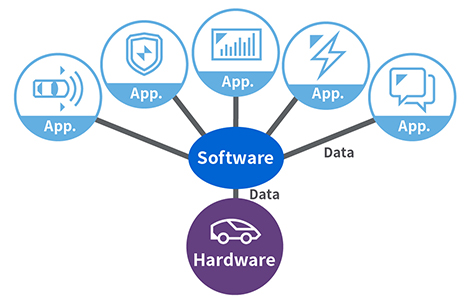
Conceptual Diagram of Software Defined at Toshiba
Software defined transforms product creation
The energy business and other key social infrastructure where Toshiba has a presence is no exception to this trend. Here, an essential requirement for realizing the software-defined vision is reliable hardware, and Toshiba is responding to the needs of the times with manufacturing know-how cultivated since its founding, and with the highest quality in the industry. However, taking immediate action and leading the industry is not simple as there are issues that are a source of concern for Toshiba. To clarify this further, we spoke to Yoshitake Kobayashi, who heads Toshiba’s Software Technology Center.
“Society continues to change,” Kobayashi says. “We need to respond to this. The questions for us are how we can best instantly incorporate those changes, transform our organization, and continue to create products and services that build on our commitment to society.
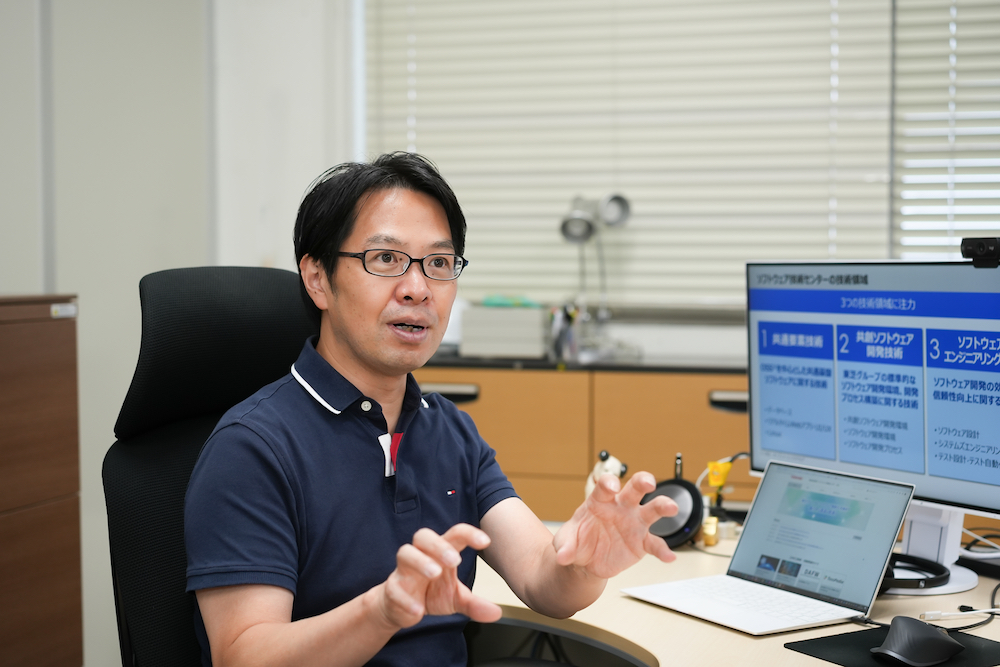
Yoshitake Kobayashi, General Manager, Corporate Software Engineering & Technology Center,
Corporate Technology Planning Div., Toshiba Corporation
He elaborates further: “In order to create value with software-defined products, we have to determine which part of the product design—the hardware—needs to emphasize rigor, reliability and high quality, and which part should be flexible and software-based, in order to create value for society. We also have to determine how to collect the data that is used to build value.
Reliable, quality hardware and services that ride on software
“Since the software-based value is what customers receive, we need to draw the whole picture from the perspective of software-defined value. Doing this basically redefines the way we create value, and that is why a different approach is required, such as hardware design and manufacturing based on software, and applications that can take data and update this or that function.”
Software defined rests on highly reliable hardware
To see how this works out in real life, we can look at Toshiba’s Virtual Power Plant (VPP) as an example of software defined applied to social infrastructure. In a VPP, energy sources such as solar, wind and other renewables, and storage facilities, particularly stationary storage batteries, are monitored and remotely controlled with IoT devices, and essentially function like a single power plant. Using data generated by consumers to understand demand allows the operator to align supply and demand.
If we are to achieve carbon neutrality, we must increase the uptake of renewable energy—but we know that its output is variable, influenced by available sunlight and other weather conditions. To realize the value of stable supply from renewable resources, we need to be able to forecast the amount of electricity that can be generated, supply it to meet demand, and move it in and out of storage when there is surplus or a shortage.
The premise for securing this stable operation is the flexible operation of hardware that operates under the control of software. The means for securing this is IoT technology for data exchanges, AI technology able to accurately predict power demand and output, and control technology for moving electricity in and out of storage systems as necessary. Taking this software-defined approach brings new value to the conventional power infrastructure. But as Kobayashi notes, the one thing essential to achieve this is the continued assurance of “a high level of trust in hardware.”
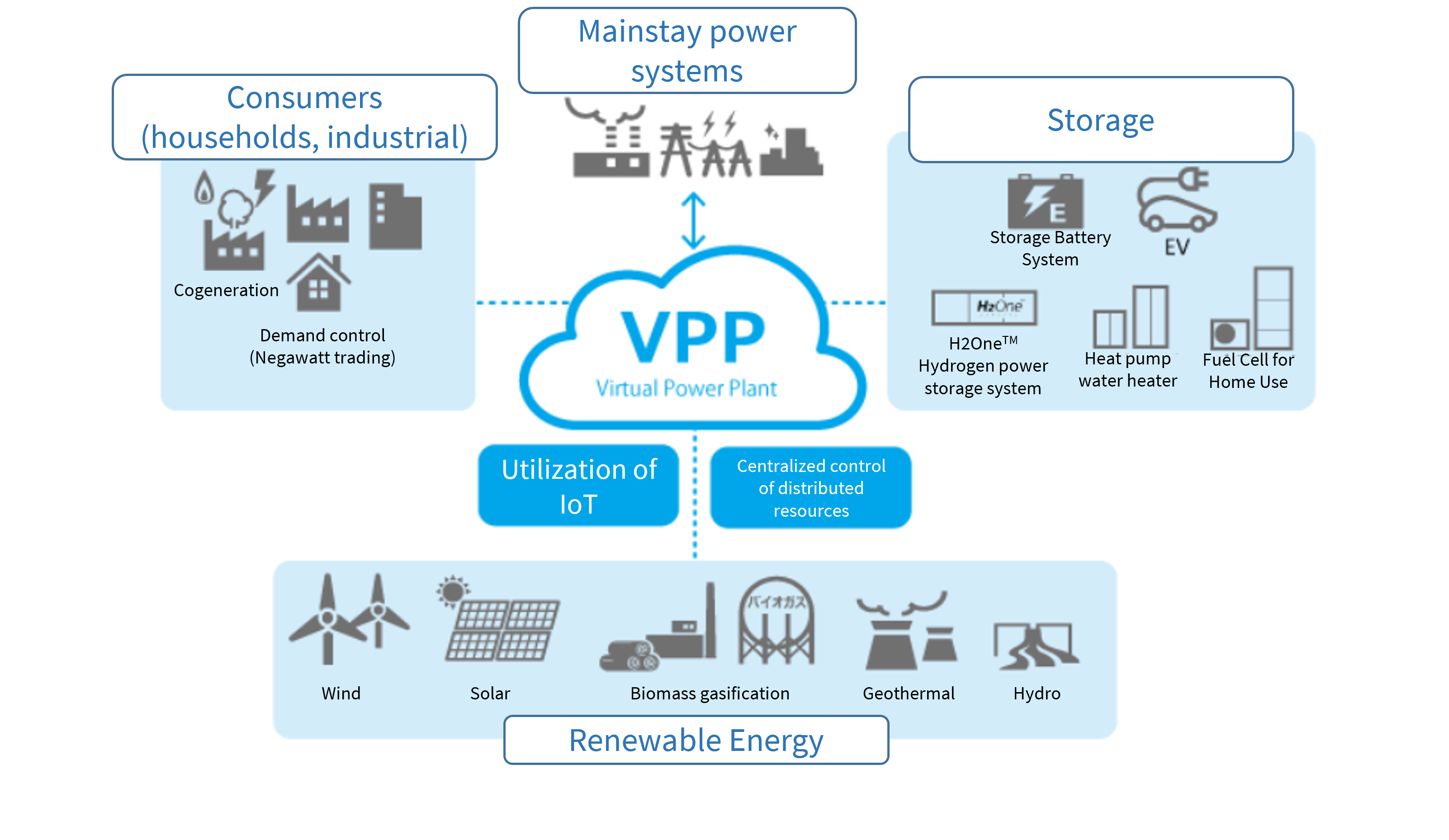
Software-defined, value-added virtual power plants
He explains what he means by this: “No matter how much the software operates and manages the system, it is the hardware that provides the foundation for its functioning and that generates all of the data that makes our lives possible.” In other words, software and applications exist expressly to maximize the value of the hardware.
“Hardware is Toshiba’s strength,” says Kobayashi. “We have a track record of almost 150 years of experience, and of relationships with customers grounded in trust. We have good hardware, so if we can get a range of data, we can use software to cook and process it and then get it out there. The other side of this is that even if we create new hardware, if the way we make use of it does not change, its scalability in the real world will be lost. Therefore, it is important to think in terms of society’s evolution, and to evolve the surrounding software and applications in a way that’s in line with the evolution of the hardware.”
Two issues Toshiba has to face
Toshiba is using software defined to drive its transformation. In a June 2, 2022 presentation on management strategy, Taro Shimada, the company’s CEO, said that if Toshiba wanted to respond to the development of a digital society, and contribute to society as a company with a role to play in social infrastructure, it first had to overcome two issues: internal rigidities and external rigidities. To get a better handle on this, we sat down with him for an interview.
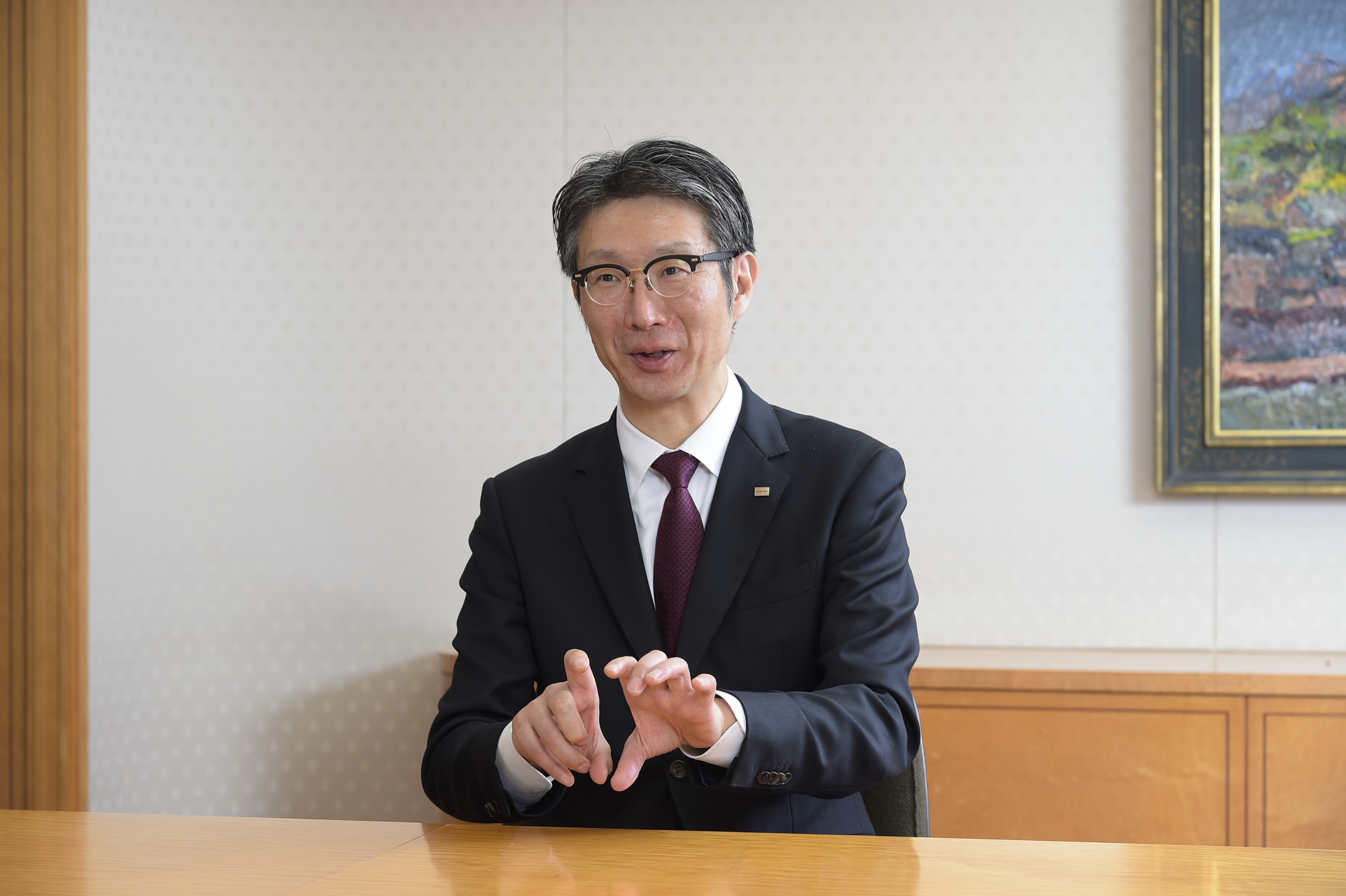
Taro Shimada, President and Chief Executive Officer, Toshiba Corporation
As Shimada shares his thoughts, it is quickly clear that he is in equal parts proud of Toshiba’s capabilities, and deeply aware of the changing world it has to navigate today. “Toshiba’s venture spirit has allowed us to take on all kinds of challenges over the years, and produced numerous successes. However, some of our successful businesses even now promote improvement activities in a vertical manner. Even if that was the right approach for the business unit when the business started, it may not be appropriate for this age of digitization and services. This is an internal rigidity.”
“Another attractive thing is that we can develop technologies that do not yet exist in society—there are many world firsts from Toshiba. When you have this capability and can do lot of things, you tend to try to do it in-house, but today we live in a world of ecosystems. Rather than always relying on our own technology to advance a business, we can provide greater value by leveraging these ecosystems and launching the business early. Failure to do this is an external rigidity, and we need to break through that.”
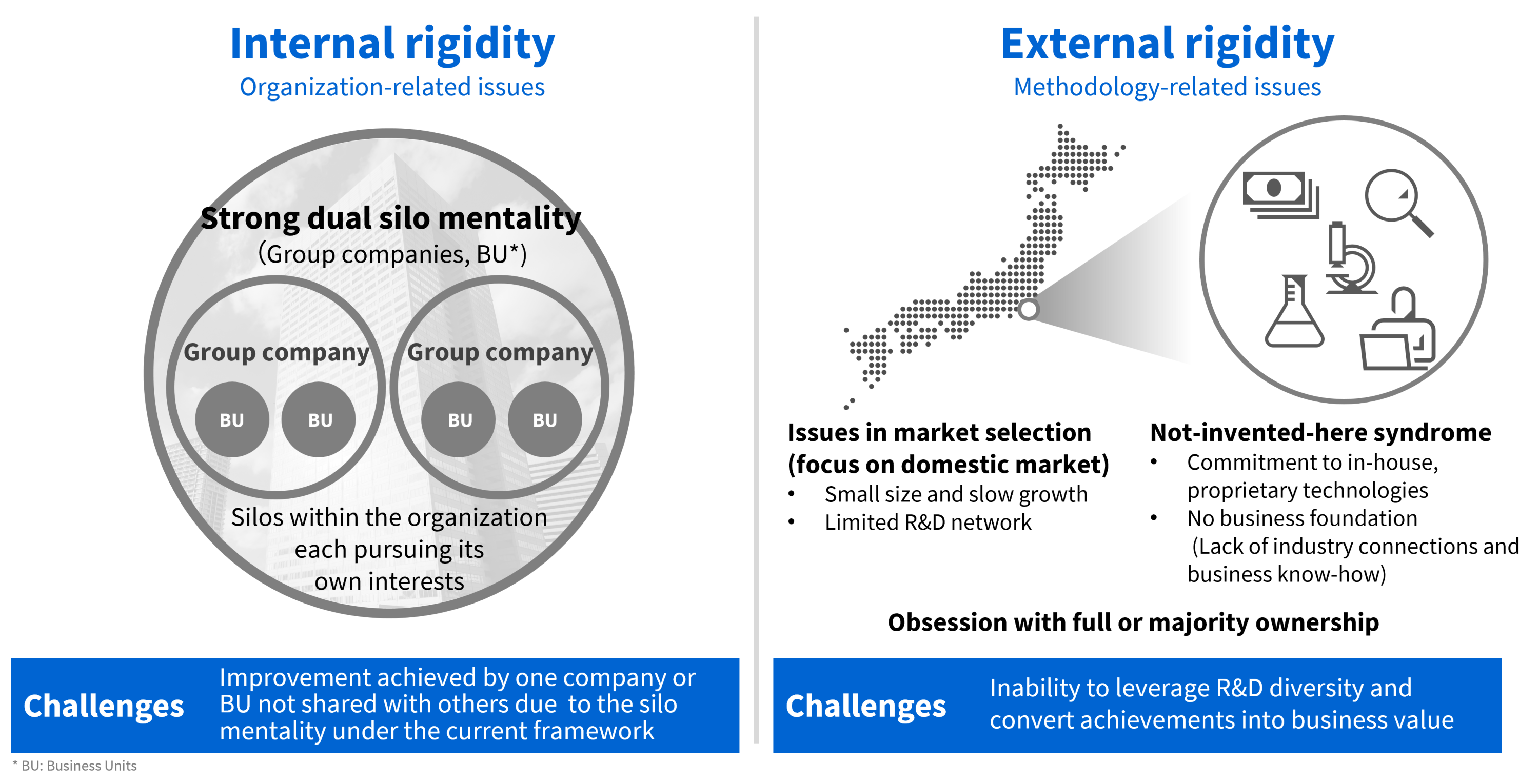
Challenges for Toshiba
Open source helps break through rigidities
With the issues framed by Shimada in mind, we asked Kobayashi what the Software Technology Center can do to help Toshiba break through the two rigidities. Part 2 of this article goes into more detail on his response, but here he points us in the general direction.
“When product development is vertically divided, software is integrated into hardware and provided as a system. As a first step, we need to separate the software from the hardware. This allows us to add applications and create new services.
“At this point, it is important to think open source and openness, which refers to software that anyone can access and improve. In other words, by having many engineers collaborate in software development in an open forum, it becomes possible to solve issues common to different hardware, and to find and fix bugs in software. This approach also encourages cooperation both within and outside the company, and rigidities can be broken.
“If the same software can be used to connect different hardware and applications, services will expand significantly, producing exponential growth and generating high value. At the Software Technology Center, we are working to break down rigidities and deliver greater value by promoting the use of open source both in-house and externally,”
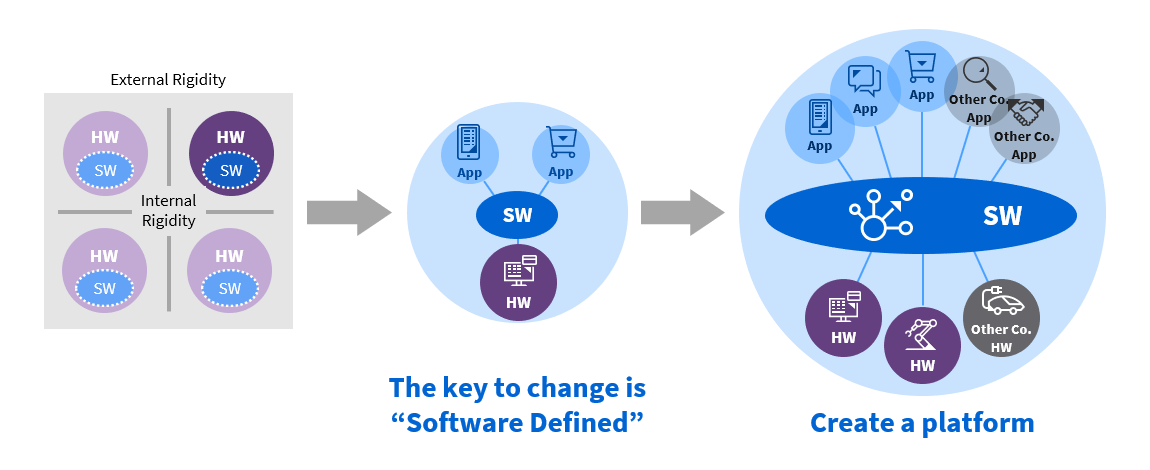
Open source software development that allows anyone to improve software breaks down rigidity
As you may well have noticed by now, the key drivers promoting software-defined products are the separation of hardware and software, and the use of open source software. The basic premise is that the promotion of open source and openness will lead to the use of the same software on multiple pieces of hardware, a break with the old model of developing software and applications that are integrated with the hardware from each business unit or for each product. Given this, how to cook the data gathered by the software becomes important, including data collected from hardware other than that made by Toshiba.
This open source approach boosts development speed, and opens the way to improve software flexibility and efficiency. It also helps to break through the rigidities outlined in the management strategy, and to accelerate the advance of software defined. Part 2 of this article takes a deeper look at how Mr. Kobayashi and his team at the Software Technology Center are promoting open source software, accelerating software discovery, and leveraging the power of data, including specific methods they are using.
* Note: Departments and titles are as at the time of interviews.
![]()





